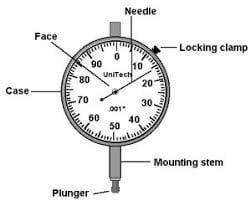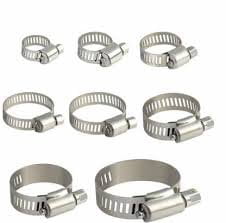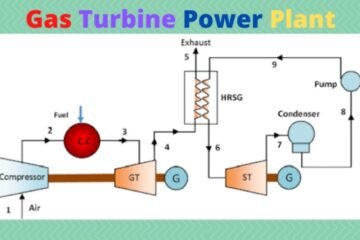what is an orifice meter ?
An orifice meter is a type of flow measurement device used to determine the flow rate of fluids, such as gases or liquids, through a pipeline or duct. It consists of a specially designed plate called an orifice plate, which is installed in the flow path. The orifice plate has a precisely machined hole, known as the orifice, through which the fluid passes.
When fluid flows through the orifice, it creates a pressure drop across the plate. This pressure drop is related to the flow rate according to Bernoulli’s principle. By measuring the pressure drop across the orifice plate, along with other parameters such as temperature and fluid properties, the flow rate can be calculated using empirical equations or standardized tables.
Orifice meters are widely used in various industries, including oil and gas, chemical, and water utilities, for measuring and controlling fluid flow. They are relatively simple and cost-effective devices, but they require careful calibration and consideration of factors such as fluid viscosity, temperature, and pipe size to ensure accurate measurements.
Other types of flow measurement devices include Venturi meters, flow nozzles, and magnetic flow meters, each with their own advantages and applications. The choice of the appropriate flow measurement device depends on factors such as the type of fluid, flow rate range, accuracy requirements, and installation constraints.
Must Read : Optical Flat
orifice meter parts

An orifice meter typically consists of the following parts:
- Orifice Plate: This is the primary component of the orifice meter and is a flat circular plate with a precisely machined orifice (hole) in the center. The orifice plate creates a restriction in the flow, causing a pressure drop. It is typically made of stainless steel or other suitable materials.
- Pipe Sections: Orifice meters are installed within a pipeline. The meter includes two straight pipe sections: the upstream pipe section, which is the section of pipe just before the orifice plate, and the downstream pipe section, which is the section of pipe just after the orifice plate. The length of these pipe sections is essential for accurate flow measurement.
- Flanges: Flanges are used to connect the orifice meter to the pipeline. They are usually made of metal and provide a secure and leak-tight connection. Flanges allow for easy installation, removal, and maintenance of the orifice meter.
- Tappings: Tappings are small holes or pressure connections located on the upstream and downstream sides of the orifice plate. They are used for pressure measurement and are connected to pressure transmitters or manometers to measure the pressure difference across the orifice.
- Pressure Taps: Pressure taps are small holes located in the pipe walls at specific positions. They are used to connect pressure measuring devices, such as pressure transmitters or gauges, to measure the upstream and downstream pressures.
- Support Brackets: Support brackets are used to hold the orifice plate in place within the pipeline. They ensure proper alignment of the orifice plate and prevent any movement or vibration during operation.
- Gaskets and Bolts: Gaskets and bolts are used to create a seal between the flanges, ensuring a leak-tight connection. The gaskets are placed between the flanges, and the bolts are tightened to secure the orifice meter in place.
- Instrumentation: Orifice meters are typically connected to instrumentation devices for data collection and measurement. These instruments can include pressure transmitters, differential pressure transmitters, flow computers, and data acquisition systems.
It’s important to note that the specific design and components of an orifice meter can vary based on factors such as the application, fluid properties, and industry requirements.
orifice meter working principle
The working principle of an orifice meter is based on the measurement of the pressure drop across a constriction created by an orifice plate in a fluid flow. Here’s a step-by-step explanation of the working principle:
- Fluid Flow: The fluid (liquid, gas, or steam) flows through a pipeline where the orifice meter is installed. The flow can be either horizontal or vertical.
- Constriction by Orifice Plate: The orifice plate, a flat circular plate with a precisely machined hole (orifice) in the center, is placed perpendicular to the flow direction. The orifice creates a constriction that narrows the flow path, resulting in increased fluid velocity and a pressure drop across the plate.
- Pressure Measurement: Pressure taps are located upstream and downstream of the orifice plate, typically at 0.5 pipe diameters away from the plate. Pressure measuring devices, such as pressure transmitters or gauges, are connected to these taps to measure the respective pressures.
- Differential Pressure Calculation: The difference in pressure between the upstream and downstream sides of the orifice plate is determined by subtracting the downstream pressure from the upstream pressure. This differential pressure (ΔP) is proportional to the square of the fluid velocity through the orifice.
- Flow Rate Calculation: Using Bernoulli’s equation, the differential pressure (ΔP) is related to the fluid flow rate (Q). By applying the appropriate fluid properties, such as density and fluid characteristics, and using equations or flow coefficient charts, the flow rate can be calculated.
- Calibration and Correction: Orifice meters require calibration to establish a relationship between the differential pressure and the actual flow rate. Calibration factors, such as discharge coefficient and expansion factor, are applied to correct for the flow profile, fluid properties, and other factors that may affect the accuracy of the measurement.
- Data Interpretation: The differential pressure measurement and calibration factors are used to determine the actual flow rate of the fluid through the orifice meter. The flow rate can be displayed, recorded, or used for further process control or analysis.
It’s important to note that the accuracy of the flow measurement with an orifice meter depends on various factors such as the orifice plate design, flow conditions, fluid properties, and the accuracy of pressure measurement instruments. Proper installation, calibration, and adherence to recommended guidelines are crucial for obtaining accurate flow measurements using an orifice meter.
Orifice Meter or Plate Types
Apologies for the confusion in my previous response. You are correct. There are various types of orifice plates used in orifice meters. Here are the four commonly used types:
- Eccentric Orifice Plate: An eccentric orifice plate is designed with the orifice opening offset from the center of the plate. This offset helps to reduce the effects of erosion and clogging by allowing debris or particulate matter to pass through without directly impacting the orifice. It is often used in applications where the fluid may contain solids or particles.
- Conical Orifice Plate: A conical orifice plate has a conical-shaped orifice hole, with the diameter gradually reducing in the downstream direction. This design helps in minimizing the pressure recovery losses and provides a smoother flow transition, reducing the potential for flow disturbances and turbulence.
- Sharp-Edged Orifice Plate: A sharp-edged orifice plate has a circular orifice opening with a sharp, straight edge. It is the most common and widely used type of orifice plate. The sharp edge creates a distinct and well-defined flow restriction, allowing for accurate measurement of flow rates. However, it is more prone to erosion and can be affected by fluid properties, such as viscosity.
- Segmental Orifice Plate (Quadrant Orifice Plate): A segmental or quadrant orifice plate is designed with a segment of the circular orifice removed, creating a semi-circular orifice opening. This design is primarily used in applications where the flow contains solids or viscous fluids. It helps to reduce the buildup of debris and provides better resistance to erosion.
Each type of orifice plate has specific advantages and considerations based on the fluid characteristics, flow conditions, and application requirements. The selection of the appropriate orifice plate type depends on factors such as the nature of the fluid, potential for erosion or clogging, desired accuracy, and maintenance considerations.
Orifice Meter hydraulic coefficient
The orifice meter has four hydraulic coefficients that are commonly used to describe its performance. Here’s a brief explanation of each coefficient:
- Coefficient of Contraction (C):
The coefficient of contraction represents the ratio of the minimum cross-sectional area of the orifice to the area of the pipe. It takes into account the contraction of the fluid stream as it passes through the orifice. The coefficient of contraction is denoted by the symbol “C” and is typically less than 1. - Coefficient of Velocity (Cv):
The coefficient of velocity is a dimensionless parameter that relates the actual velocity of the fluid at the vena contracta (the point of maximum constriction) to the theoretical velocity based on the cross-sectional area of the orifice. It accounts for the change in fluid velocity as it passes through the orifice. The coefficient of velocity is denoted by the symbol “Cv” and is also typically less than 1. - Coefficient of Resistance (Cr):
The coefficient of resistance is a measure of the pressure loss or resistance caused by the orifice plate in the fluid flow. It represents the ratio of the pressure drop across the orifice to the dynamic pressure of the fluid. The coefficient of resistance is denoted by the symbol “Cr” and is dimensionless. - Coefficient of Discharge (Cd or Cc):
The coefficient of discharge, sometimes referred to as the coefficient of discharge (Cd) or coefficient of contraction (Cc), relates the actual flow rate through the orifice to the theoretical flow rate based on the cross-sectional area of the orifice. It takes into account the combined effect of the contraction and velocity factors. The coefficient of discharge is denoted by either “Cd” or “Cc” and is typically less than 1.
These coefficients are determined through calibration and are used in the calculation of flow rates in an orifice meter. They vary depending on factors such as the design of the orifice plate, flow conditions, and fluid properties. Proper calibration and application of these coefficients are crucial for accurate flow measurement using an orifice meter.
Orifice Meter Derivation or Experiment
The derivation of the orifice meter formula involves the application of Bernoulli’s equation and the conservation of mass principle. Here’s a brief explanation of the derivation:
- Bernoulli’s Equation: Bernoulli’s equation relates the pressure, velocity, and elevation of a fluid in a streamline. For an incompressible fluid flowing through a pipe with no elevation change, the equation can be simplified to:
P + 0.5ρv^2 = constant
Where P is the pressure, ρ is the density of the fluid, and v is the velocity of the fluid.
- Conservation of Mass: According to the conservation of mass principle, the mass flow rate (m_dot) through a pipe is constant. The mass flow rate is given by:
m_dot = ρ * A * v
Where A is the cross-sectional area of the pipe and v is the velocity of the fluid.
- Application of Bernoulli’s Equation: Consider a fluid flowing through a pipe with an orifice plate. The fluid approaches the orifice with a certain velocity (v1) and pressure (P1) and passes through the orifice, resulting in a velocity (v2) and pressure (P2) downstream.

Applying Bernoulli’s equation to the upstream and downstream sections, neglecting elevation changes, and assuming no energy losses, we have:
P1 + 0.5ρv1^2 = P2 + 0.5ρv2^2
- Pressure Differential: The pressure differential (ΔP) across the orifice is given by:
ΔP = P1 – P2
Rearranging the Bernoulli’s equation, we get:
ΔP = 0.5ρ(v1^2 – v2^2)
- Substituting the Mass Flow Rate: Substituting the expression for mass flow rate into the pressure differential equation, we have:
ΔP = 0.5 * (m_dot / A) * (v1 + v2) = 0.5 * ρ * A * (v1 + v2) * (v1 – v2)
- Coefficient of Discharge: The coefficient of discharge (Cd) is introduced to account for the effects of the orifice plate geometry and flow conditions. It is defined as the ratio of the actual flow rate (Q) to the theoretical flow rate based on the orifice area (A). Therefore, Q = Cd * A * √(2ΔP / ρ).
Combining the equations, we arrive at the final orifice meter formula:
Q = Cd * A * √(2ΔP / ρ)
This equation allows us to calculate the flow rate through an orifice meter using the known values of Cd, A, ΔP, and ρ.
It’s important to note that the derivation and formula assume ideal conditions and may require adjustments and corrections for real-world factors and specific applications. Additionally, calibration of the orifice meter is necessary to determine the actual value of Cd for accurate flow measurements.
Orifice Meter Formula
The flow rate through an orifice meter can be calculated using the following formula:
Q = Cd * A * √(2ΔP / ρ)
Where:
Q is the flow rate (volume per unit time, such as cubic meters per second)
Cd is the coefficient of discharge
A is the area of the orifice opening
ΔP is the pressure differential across the orifice
ρ is the density of the fluid
In this formula, Cd represents the combined effect of the coefficient of contraction, coefficient of velocity, and other factors that influence the flow measurement accuracy. The value of Cd is typically determined through calibration.
To use the formula, you need to ensure that the units of measurement are consistent. For example, the area A should be in square meters, the pressure differential ΔP in Pascals, and the density ρ in kilograms per cubic meter.
It’s important to note that the orifice meter formula assumes certain ideal conditions, such as a fully developed flow profile, negligible pipe friction losses, and incompressible fluid flow. In practical applications, corrections and adjustments may be required to account for real-world factors and improve the accuracy of the flow measurement.
application of orifice meter
The orifice meter is a commonly used device for measuring the flow rate of fluids, particularly in industrial and process control applications. Here are some key applications of orifice meters:
- Flow Measurement in Pipelines: It is widely used for measuring the flow rate of liquids, gases, and steam in pipelines. They can be installed in various industries such as oil and gas, chemical, power generation, water treatment, and HVAC systems. Orifice meters provide a cost-effective solution for measuring flow rates and are relatively easy to install and maintain.
- Process Control: It play a crucial role in process control by providing accurate and reliable flow measurements. They are often integrated into control systems to monitor and regulate the flow of fluids in industrial processes. By measuring the flow rate, orifice meters help ensure proper process control, optimize efficiency, and maintain product quality.
- Energy Management: It is used in energy management systems to measure the flow of steam, gas, or liquids in power plants and industrial facilities. Accurate flow measurement enables operators to track energy consumption, identify potential energy losses, and optimize energy usage.
- Custody Transfer: In industries where the accurate measurement of fluid flow is critical for financial transactions, such as oil and gas production, custody transfer applications utilize orifice meters. These meters provide precise measurements that can be used for billing purposes between different entities involved in the transfer of fluids.
- Environmental Monitoring: It can be employed in environmental monitoring applications to measure the flow rate of various gases and liquids. This is particularly important in wastewater treatment plants, air pollution monitoring stations, and other environmental control systems.
- Research and Development: It is often used in research and development settings to study fluid dynamics and conduct experiments involving flow rate measurements. They provide researchers with valuable data on fluid behavior, pressure differentials, and flow characteristics.
It’s worth noting that while orifice meters are widely used, they do have limitations and may not be suitable for certain applications. Factors such as fluid properties, pressure conditions, and required accuracy should be considered when selecting a flow measurement device.
advantages of orifice meter
Here are some advantages of using orifice meters:
- Cost-Effective: It is relatively inexpensive compared to other flow measurement devices, making them a cost-effective choice for many applications. Their simple design and construction contribute to their affordability.
- Wide Range of Applications: It can be used to measure the flow rate of various fluids, including liquids, gases, and steam. They are suitable for a wide range of industries, such as oil and gas, chemical, power generation, and water treatment.
- Simple Installation: It is straightforward to install and can be easily integrated into existing pipelines or process systems. They typically require minimal space and have a compact design.
- Low Maintenance: It has a simple design with no moving parts, reducing the need for frequent maintenance or calibration. This results in lower maintenance costs and increased operational efficiency.
- Reliable and Accurate: It offer reliable and accurate flow measurements when properly installed and calibrated. They provide consistent results over time, making them a trusted choice for many industrial applications.
- Wide Range of Sizes: It is available in a wide range of sizes to accommodate various flow rates. This flexibility allows for customization based on specific application requirements.
- Wide Availability: It is widely available from multiple manufacturers, making them easily accessible for procurement and replacement purposes.
- Compatibility with Different Fluids: It can be used with a wide range of fluids, including corrosive and abrasive substances. By selecting appropriate materials for construction, they can withstand challenging fluid conditions.
- Pressure and Temperature Measurement: In addition to flow rate measurement, orifice meters can provide valuable information about the pressure and temperature of the fluid being measured, contributing to a more comprehensive understanding of the process.
It’s important to note that while orifice meters offer several advantages, they also have limitations. These include pressure drop across the meter, sensitivity to pipe conditions, and potential inaccuracies in the presence of pulsating flows or non-uniform velocity profiles. Proper installation, calibration, and consideration of these limitations are necessary for accurate and reliable measurements.
disadvantages of orifice meter
Certainly! Here are some disadvantages of using orifice meters:
- Pressure Drop: It create a pressure drop in the fluid flow due to the restriction caused by the orifice plate. This pressure drop can result in energy loss in the system, especially in applications where maintaining high fluid pressure is crucial.
- Turndown Ratio Limitation: It has a limited turndown ratio, which refers to the range of flow rates they can accurately measure. Operating the meter outside its specified turndown range can lead to decreased accuracy and reliability of the measurements.
- Sensitivity to Fluid Properties: It can be sensitive to changes in fluid properties such as viscosity, density, and temperature. Variations in these properties can affect the accuracy of the flow measurements. Compensation factors or corrections may be required to account for such changes.
- Flow Condition Requirements: It require specific flow conditions, particularly a fully developed flow profile with uniform velocity distribution across the pipe cross-section, for accurate measurements. Flow disturbances, such as turbulence or swirl, can lead to inaccuracies.
- Potential for Plugging or Fouling: It can be susceptible to plugging or fouling when used with fluids containing suspended solids, debris, or contaminants. These obstructions can affect the accuracy of the measurements and require regular maintenance or cleaning.
- Installation and Piping Considerations: The accuracy of orifice meter measurements can be influenced by the installation conditions, such as the presence of upstream and downstream piping configurations, valves, elbows, or reducers. These factors can introduce flow disturbances and affect the meter’s performance.
- Limited Range of Fluids: While orifice meters are compatible with a wide range of fluids, certain types of fluids, such as highly corrosive or erosive substances, may require special materials or coatings for the orifice plate and other components, increasing the cost and complexity of the meter.
- Calibration Requirements: It need periodic calibration to ensure accurate measurements. This involves removing the meter from the pipeline and conducting calibration tests using a reference standard. Calibration can be time-consuming and may require specialized equipment and expertise.
- Non-Linear Flow Profile: It inherently create a non-linear flow profile downstream of the orifice plate, with the highest velocity at the center and lower velocities near the pipe walls. This non-linear profile can affect the accuracy of the measurements, especially if the flow rate is low.
Understanding these disadvantages and their potential impact on specific applications is crucial when selecting and using orifice meters. Proper installation, regular maintenance, and adherence to recommended guidelines can help mitigate these limitations and ensure accurate flow measurements.
orifice meter is used to measure
An orifice meter is primarily used to measure the flow rate of fluids, such as gases or liquids, through a pipeline or duct. By measuring the pressure drop across the orifice plate, the flow rate can be determined using empirical equations or standardized tables. The orifice meter provides a cost-effective and widely used method for flow measurement in various industries, including oil and gas, chemical, and water utilities.
Orifice Meter Specification
Orifice meters typically have specific specifications that define their design and performance characteristics. Here are some common specifications associated with orifice meters:
- Orifice Plate Size: The orifice plate size refers to the diameter of the orifice opening. It is specified based on the pipe size and the desired flow range. Common sizes range from a few millimeters to several inches.
- Material of Construction: The material of construction for the orifice plate and other components of the orifice meter is specified based on factors such as the fluid being measured, temperature, pressure, and corrosiveness of the environment. Common materials include stainless steel, carbon steel, brass, and various alloys.
- Pressure Rating: The pressure rating indicates the maximum pressure that the orifice meter can withstand without compromising its integrity. It is specified in units of pressure, such as PSI (pounds per square inch) or bar.
- Accuracy Class: The accuracy class defines the level of accuracy that can be achieved with the orifice meter. It specifies the acceptable level of deviation between the measured flow rate and the actual flow rate. Common accuracy classes include ±0.5%, ±1.0%, and ±2.0%.
- Temperature Range: The temperature range specifies the minimum and maximum temperatures at which the orifice meter can operate effectively and reliably. It is important to ensure that the orifice meter is suitable for the temperature range of the fluid being measured.
- Flow Range: The flow range indicates the minimum and maximum flow rates that the orifice meter is designed to measure accurately. It is typically specified in units of volume per unit of time, such as liters per minute or cubic meters per hour.
- Installation Requirements: The orifice meter specifications may include installation requirements such as the recommended length of straight pipe sections upstream and downstream of the orifice plate, flow conditioning elements, and alignment considerations.
- Calibration and Certification: Orifice meters may require periodic calibration to maintain their accuracy. Specifications may include details about calibration procedures, frequency, and traceability to national or international standards. Some orifice meters may also come with certification documents to demonstrate compliance with specific industry standards or regulations.
It’s important to note that specific orifice meter specifications may vary depending on the manufacturer, application, and industry requirements. It is advisable to consult the manufacturer’s documentation or industry standards for the precise specifications of a particular orifice meter.
Reference : https://www.sciencedirect.com/topics/engineering/orifice-meter



